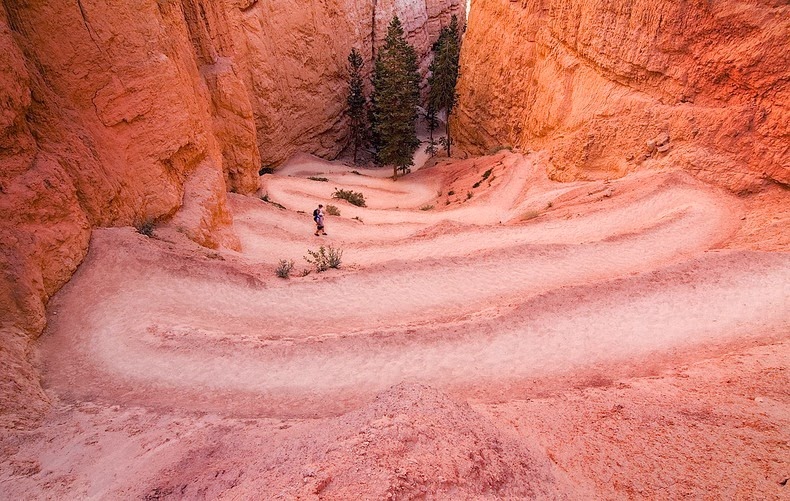Inside the Bryce Canyon National Park, in the narrow alleys formed by towering rocks on either side, grow one of the tallest trees of the Southwest - the Pinus ponderosa. Some of these trees measure more than 5 feet in diameter and grow to incredible heights of 150 feet, as they try to poke their way out above the surrounding cliffs. Named for its ponderous (heavy) wood, this pine is the major lumber tree in the Southwest. These woody behemoths grow on dry, well-drained, mountain slopes and mesas, and are easily recognized by their tall, straight, thick trunks, clad in scaled, rusty-orange bark that has split into big plates. They are also easily identified by smell - Ponderosa Pine bark smells like vanilla or butterscotch.
Ponderosa Pines are almost everywhere at Bryce Canyon. Take any one of the numerous hiking trails throughout the National Park and you will almost inevitably encounter these trees. However, the most spectacular sights can be had at Ponderosa Canyon, so named because of the huge Ponderosa Pines that rise from the canyon floor. At higher elevations, the Ponderosa Pines give way to Blue Spruce, Douglas-fir and White Fir, which often confuses visitors not expecting to find themselves surrounded by a forest of Spruce and Fir in a canyon named after the Ponderosa Pine.
Douglas-firs are surprisingly common at Bryce Canyon in spite of the dry climate. They are most abundant in the southern higher elevations of the park, but can also be found hiding in shady sections of the main amphitheater. The most famous Douglas-firs at Bryce can be found at the bottom of the Wall Street side of the Navajo Loop Trail. Usually, these behemoths are mistaken for Ponderosa Pines, but are actually easy to distinguish by the large number of cones which litter the ground.

Source: National Park services



























I found this place to be far more interesting and beautiful than nearby grand canyon even though it doesn't have the same notoriety.
ReplyDelete